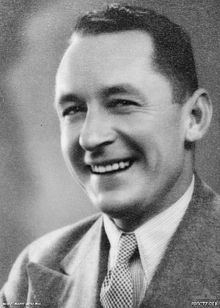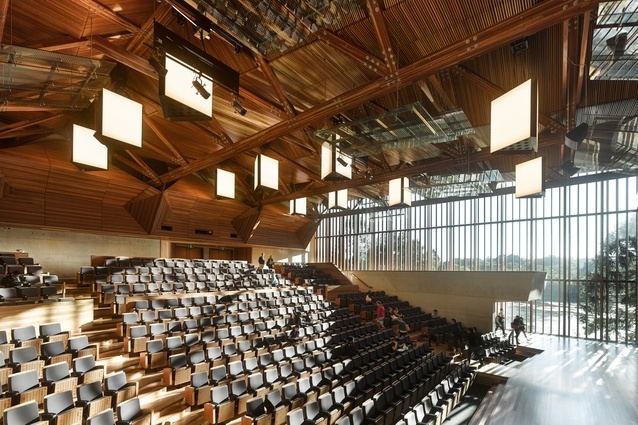Nationality Australian Role Architect | Name Emil Sodersten Occupation Architect | |
 | ||
Buildings Birtley Towers, Elizabeth Bay (1935) City Mutual Building, Sydney (1936) Nesca House, Newcastle, New South Wales Structures Australian War Memorial, University House | ||
The emil sodersten award for interior architecture
Emil Lawrence Sodersten (30 August 1899 – 14 December 1961) was an Australian architect active in the second quarter of the 20th century. His work encompassed the Australian architectural styles of Art Deco and Functionalist & Moderne. His design for the Australian War Memorial was "the first national architectural monument in Australia". The Australian Institute of Architects presents the Emil Sodersten Interior Architecture Award annually in his honour.
Contents
- The emil sodersten award for interior architecture
- 2016 Emil Sodersten Award for Interior Architecture Canberra Airport Hotel
- Family
- Education
- Architectural career
- War Service
- Later life
- References

2016 Emil Sodersten Award for Interior Architecture Canberra Airport Hotel
Family
Sodersten was born in the inner-Sydney suburb of Balmain, the second of seven children born to Julia (née Dolleen) and Emil Sodersteen. Emil Junior and his brothers, Erik and Karl, later changed their surnames by deed poll to Sodersten.
Education
In 1915 Sodersten was articled in architecture to Ross & Rowe and in the ensuing five years studied at Sydney Technical College. During 1921 he attended lectures at the University of Sydney given by the new Dean of Architecture, Leslie Wilkinson.
Architectural career
The Queensland firm Hall & Prentice were commissioned to design Brisbane City Hall in the early 1920s and Sodersten worked on the project with Bruce Dellit and Peter Kaad. He returned to Sydney in 1923 and was registered as an architect whilst working for John P. Tate & Young. Two years later Sodersten went into private practice. In 1927-28 he became a council-member of the Institute of Architects of New South Wales and was made a fellow of the Royal Australian Institute of Architects in 1931. He entered the international competition to design the Australian War Memorial in Canberra. His design was considered exceptional but, as with most of those entered, was over budget. The only entry within budget was by John Crust and so the two architects were commissioned to work together on an amended design. Crust project managed the new building to Sodersten's even more monumental design. After conflict arose with Crust, Sodersteen withdrew in 1938.
In Sydney he designed numerous apartment blocks, including Birtley Towers at Elizabeth Bay, and office buildings, including the City Mutual Life Assurance Society. During the 1930s he worked in association with his brothers Erik Sodersten, an architect, and Karl Sodersten, a structural engineer. When Emil visited Europe in 1935 he was impressed with the work of Willem Marinus Dudok and Hendrik Petrus Berlage and from then on worked in the functionalist style. In the late 1930s Nesca House, Newcastle was his major project.
War Service
During World War II, Sodersten served with the Royal Australian Air Force in Papua and New Guinea and Queensland as a flight lieutenant.
Later life
Sodersten married a 37-year-old secretary, Elsie Vera Wynn, in the Catholic Church in 1951. After World War II he designed several shopping centres for the Housing Commission of New South Wales, including the Oakes Centre in Westmead and the Broad Oaks building in Ermington. In 1951, he designed a Canberra chancellery and residence for the High Commissioner of Pakistan but the project remains unbuilt. Sodersten designed the Reid Building for St Andrew's College, University of Sydney, completed in 1953. He died of a coronary occlusion at home in Manly and was survived by his wife.
